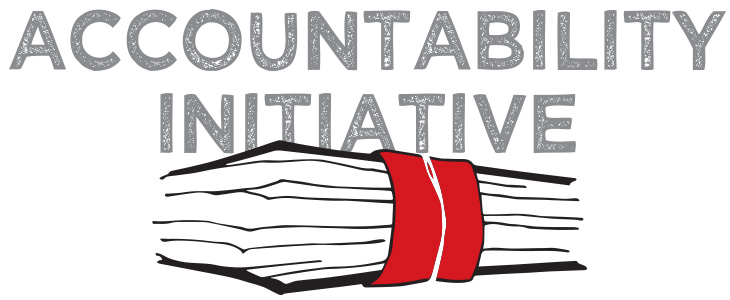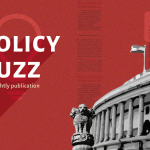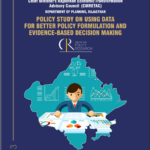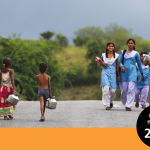
Pedagogy to train SMC members needs to be Critical Pedagogy
22 April 2014
Community based organizations such as School Management Committees (SMCs) have a significant role in functioning of schools. The recently introduced RTE Act has made the formation of SMCs mandatory. SMCs, if empowered with proper training based on critical pedagogy, can really play a greater role in school governance.
Background
India has one of the largest numbers of schools (1.3 million schools[1]) in the world. Since 2000 – 2001, ever since the Sarva Siksha Abhiyan (SSA)[2] has been operational, the education system in the country grew both in terms of institutions (school buildings) as well as in enrolment[3]. There is a shift in focus of the education system towards a system of mass education (compulsory education for all). This shift also shows how the education system, after RTE Act, in the country demands greater capability (teacher’s capacity, improved pedagogy, better TLM and school infrastructures) at the school level to respond to the emerging need of quality education for a diverse student population.
Enrolment in schools has increased tremendously. But retention is now a great challenge. Quality education (improving learning outcome) is an issue that needs to be tackled strategically[4]. Even though huge amount of funds are being spent by SSA on improving the school infrastructure[5] – according to a one survey reported for NDTV news[6], it was recorded that the main facilities and infrastructure were mostly unavailable or in a very poor state. Schools with unusable toilets were found in more than a third of the schools surveyed.
The conditions on the ground do not reflect the amount of funding allocated to build schools’ capacity Funds for improving school infrastructure like the School Maintenance Grant and School Development Grant, as well as funds for Teaching Learning Materials (TLM) are now coming regularly to schools. As per the PAISA report 2012, there have been some improvements in the percentage of schools receiving grants in 2011 -12 as compared with 2010-11. However, the decision making process to spend this money effectively and efficiently needs to be strengthened. there is a stark decision making problem utilizing the funds coming through this grants effectively and efficiently.
SMC in RTE
The RTE Act, envisaged that parental involvement in children’s education through School Management Committees will improve governance at the school level and subsequently improve learning outcomes. SMCs have been given power to plan for the expenditure of money at the school level and monitor school level activities – such as teacher attendance, the Mid-Day Meal process amongst other things. They were formed to accelerate the process of a bottom – up planning and formed an important link in the process of decentralized planning, implementation and monitoring in the education system.
Reality at the ground level
SMC as a platform of enhancing school governance is yet to play a pivotal role. There are instances where SMC members are not aware of their status as SMC members[7]. Empowering parents cannot be seen in isolation from the community dynamics in the community. In one of the study by Mansuri and Rao[8], suggests that in many community based or driven initiatives for (like SMCs) in India it has been seen that they are “dominated by elites and both targeting and project quality tend to be markedly worse in more unequal society”. Having known the fact that Indian society is fragmented mainly on the basis of caste and gender, I fear that the SMCs may also face the same fate if such dynamics are not taken care of before any interventions.
The level of awareness and opinions of SMCs regarding various school level issues is relatively low[9]. Low awareness will lead to no participation or passive participation[10]. Simply raising awareness is not the ultimate solution to make them actively participate. They need to be trained in such a way that they understand the socio-economic contradictions within this society: and do not accept life for what it is and learn to question the truth that they follow.
Training Pedagogy for SMC
The pedagogy to be used for training SMC members by the government institutions and NGOs needs to be a critically assessed[11].
The pedagogy of the training session of SMC members must be based on adult learning principles. The SMC members should be facilitated to rethink their present role in school and the ways to improve it – as a manager of the school in which their children take education. Their active participation is the requisite to enhance their children’s learning outcomes. They should think it as their duty to take part actively in the decision making of the schools for their children’s betterment. It should give them hope, that change is possible. It should facilitate them to question and reflect why the grants at school level come late and if they can do something about this; they should also know what the learning outcomes of their children and be able to interact with teachers with confidence.
The SMC members after the training through critical pedagogy will be able to enter into dialogue with other stakeholders at the school level like the head master block level education officers and elected ward members for improved school governance. They can also actively support the school by motivating other community members to send their children to school, thereby increasing students’ enrolment and retention as and supporting teachers. If SMC members actively participate in SMC meetings then better action plan which will be Specific, Measurable, Achievable, Realistic and Time-bound. The concern of proper use of funds for better and usable infrastructure facilities will also be addressed more effectively. SMC members can be active advocates for the school development from the Panchayat to Zila Parishad level.
Hence my strong argument is to frame a critical pedagogy while training SMC members to take active part in owning their school activities and make a participatory School Development Plan. Hence, those who work with SMC members need to understand the members’ socio-economic profile, power structures in the village and in the school and the member’s level of consciousness before they really work on the pedagogy of training SMC members.
[1] http://www.dise.in/Downloads/Publications/Publications%202011-12/Flash%202011-12.pdf
[3] As per 9th ASER report, enrolment in 6-14 years age continues to be very high with more than 96% children enrolled in schools. Link to ASER report (http://img.asercentre.org/docs/Publications/ASER%20Reports/ASER_2013/4-pagers/nationalfindings-aser2013.pdf)
[4]http://img.asercentre.org/docs/Publications/ASER%20Reports/ASER_2013/ASER2013_report%20sections/aser2013fullreportenglish.pdf
[5] PAISA 2012: Overall outlays for teachers and school infrastructure increased by 61% between 2010-11 and 2011-12. School Infrastructures accounted for the next highest share with an allocation of 35% of total SSA budget after allocations to teachers which are about 43%.
[6] http://www.siliconindia.com/news/general/Most-Govt-Schools-in-India-Lack-Basic-Infrastructure-Survey–nid-149669-cid-1.html
[7] Take for example, these quotes from the stories our PAISA associates sent us from the field[4] which show the information and capacity problems SMC’s face. – “We found that the SMC members were not even aware that they are members” –Swapna Ramtake, Sagar, Madhya Pradesh / “SMC members don’t make the connection between their attending meetings and the quality of outcomes in the school” – Poonam Choudhary, Jaipur, Rajasthan / “We met the lady who was made the SMC head by the headmaster, and she was never told what her roles and responsibilities are” – Seema Muskan, Nalanda Bihar. (http://www.accountabilityindia.in/accountabilityblog/2522-empowering-school-management-committees-helping-smc-members-plan-better)
[8] http://www.cultureandpublicaction.org/bijupdf/mansurirao.pdf (Community-Based and -Driven Development: A Critical Review, Ghazala Mansuri and Vijayendra Rao, The World Bank Research Observer, vol. 19, no. 1 – Spring 2004)
[9] http://www.create-rpc.org/pdf_documents/India_Policy_Brief_4.pdf
[10] Chettri, A. 2010. “Citizenship and Governance: Citizen Participation in Mandatory Village Forum”, Perspectives in Social Work (published by College of Social Work, Nirmala Niketan), Vol: XXV (No. 1 & 2) April – August 2010.
[11]Critical pedagogy is a philosophy of education and social movement that combines education with critical theory. First described by Paulo Freire, it has since been developed by Henry Giroux and others as a praxis-oriented “educational movement, guided by passion and principle, to help (People) develop consciousness of freedom, recognize authoritarian tendencies, and connect knowledge to power and the ability to take constructive action.” Critical pedagogy includes relationships between teaching and learning. Its proponents claim that it is a continuous process of what they call “unlearning”, “learning”, and “relearning”, “reflection”, “evaluation”, and the impact that these actions have on the students, in particular students whom they believe have been historically and continue to be disenfranchised by what they call “traditional schooling”.





